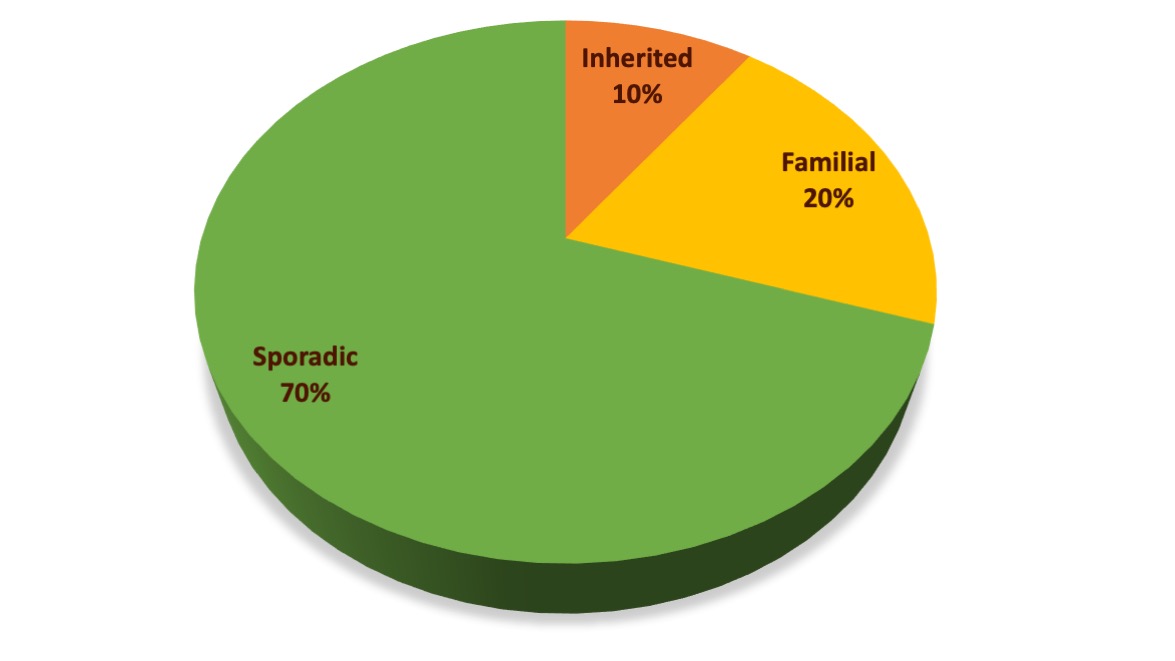Hereditary Cancer and Non-Hereditary Cancer Risk
Cancer is common. Almost 40% of people will develop cancer sometime in their life. Most cancer is caused by random chance. Cancer can also be caused by exposure to radiation, smoking, or what we eat and drink. The biggest cancer risk factor is age. The older we get the more likely it is that we will get cancer.
Geneticists divide cancer into three categories:

1) Hereditary Cancer: about 10% of all cancer
Some families have a genetic change that results in a very high chance for specific types of cancer. These genetic changes are called "pathogenic variants" or "mutations." They are passed down from one generation to the next like other genetic traits. There are ways to manage these increased risks for cancer, including frequent screening or surgery to prevent cancer.
Not everyone with a hereditary cancer condition will get cancer, and not everyone in these families that has cancer has the cancer variant.
2) Familial Cancer: about 20% of all cancer
Genetic testing finds no single hereditary variant in most people with a family history of cancer. Familial cancers can occur because of a combination of both non-hereditary risk factors and multiple genetic factors. Several people may have the same or different types of cancer. Familial cancer may be due to many genes that each have a low or moderate risk or a common environment. A family history of many relatives with cancer may mean more cancer screening should be done.
3) Sporadic / Non-hereditary Cancer: about 70% of all cancer
These cancers occur by random chance. They are caused by non-hereditary risk factors - some we can control and some we cannot. We may have control over some risk factors (diet, smoking, radiation), but we do not have control over the biggest risk factor: age.
If someone finds out that they do not have a hereditary cancer variant that is known to be in their family, it is best for them to follow general cancer prevention practices and manage their health based on their personal and other family risk factors.
